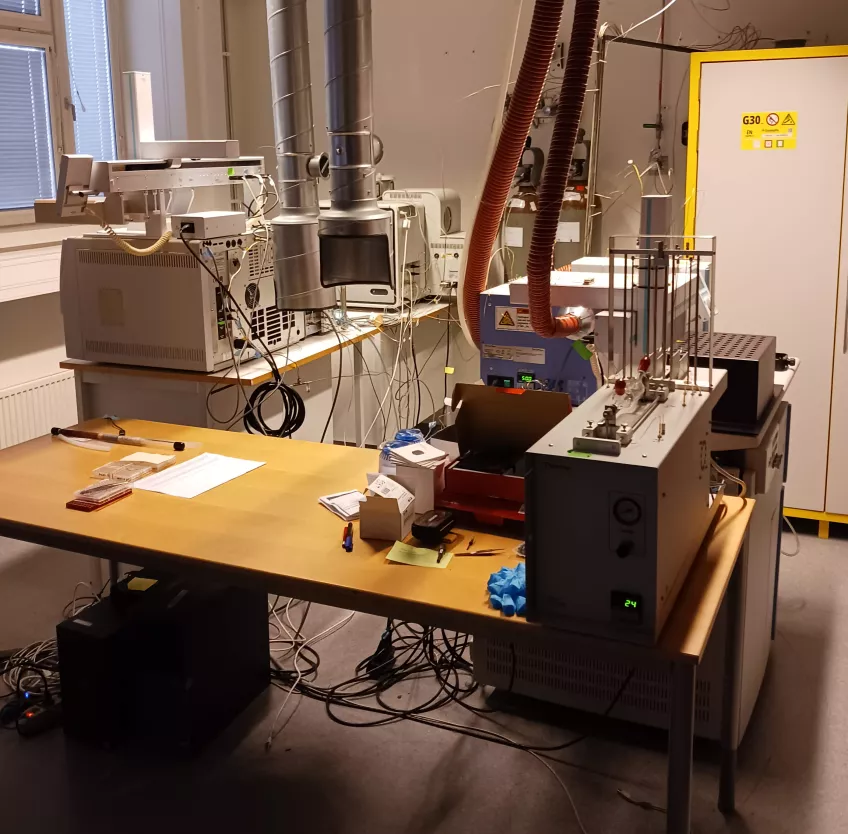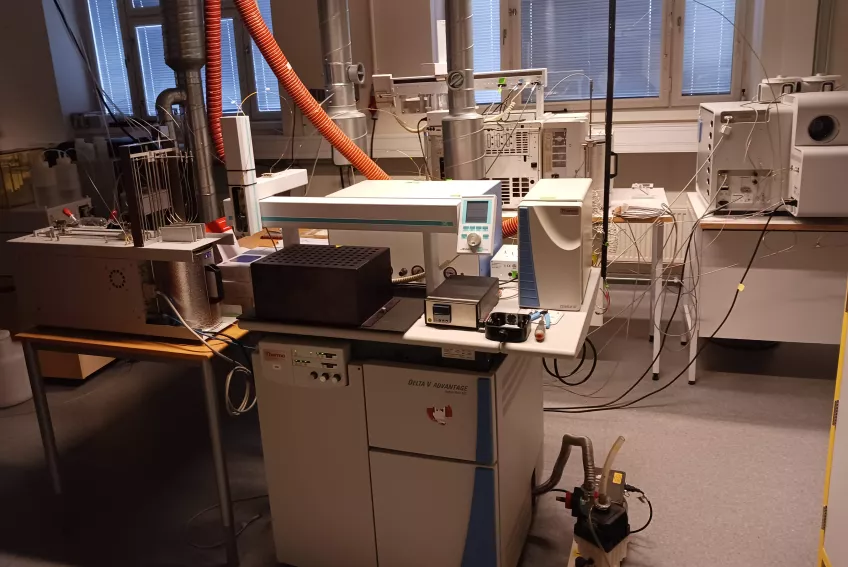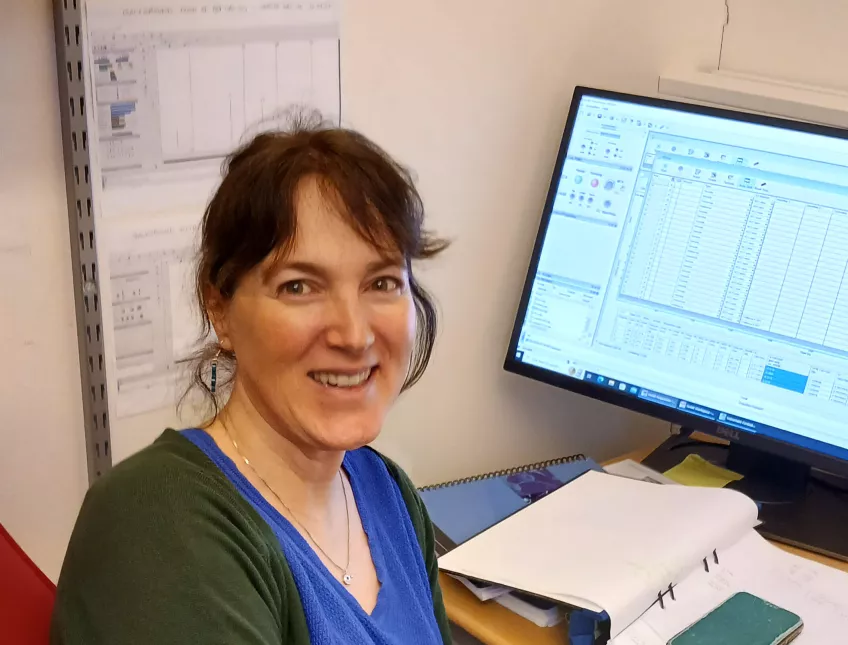Gas-isotope ratio mass spectrometer Laboratory for light stable istopes determination
Gas-Isotope-ratio mass spectrometry (G-IRMS) allows the precise measurement of mixtures of naturally occurring light stables isotopes. The mass differences between isotopes leads to quantifiable kinetic- or mass dependent fractionation that is characteristic of the biological, chemical or physical history of a sample. Such data allows the reconstruction and history of changes in fluxes (and processes) in a body, or in the lithosphere, atmosphere, cryosphere, hydrosphere or biosphere. The facility enables measurement of H, C, N, O isotope compositions in all kinds of samples; minerals, rocks, sediments, organisms, fossils, water, peat, soil, organic matter, atmospheric gases etc. The applications of stable isotopes to natural systems are thus extraordinarily broad, with new ideas being developed constantly.
The laboratory is equipped with stable isotope ratio mass spectrometer ThermoFischer Delta V with conflo interface (gestion of reference gas) with 4 interfaces to transform the original samples (solid, liquid or gas) in a gas measured by the IRMS:
- GasBench II
- Elemental analyser Isolink
- Gas chromatography isolink
- Precon
- Possibilities
The configuration allows to measure light isotopes (C, H, O, N) in a high variety of types of material: water, gas, solid or liquid organic molecules, carbonates, phosphates, nitrates, sulfates, some silicates.
In detail:
- GasBench II (GB): δ 18O, δ 13C in water, atmospheric gas and carbonates
- Elemental analyser Isolink (EA): δ 13Corganic, δ 15N, δ2H, δ 18O in soil and sediment, plants, organic matter and some phosphates, nitrates, sulfates and silicates.
- Gas chromatography isolink (GC): δ2H, δ 13C, δ 15N of specific molecules from gas or solid organic molecules
- Precon: δ 13C, δ 15N in gas CH4 and N2O2
- Prices
The cost per sample varies considerably depending on the method used, the type of samples, if you want us to make some part of the pre-treatment, etc. Please contact us for an estimate.
Separate prices apply to customers within Lund University.
Discounts apply when large numbers of samples are submitted at the same time.
- Supervision
It is possible for a researcher, a PhD student or a Master student to come in the laboratory and measure the samples themselves on the Gasbench or the EA under supervision. The prices varies here following the grade of independance of the researcher.





